This was published 1 year ago
Guide to sleeper trains in Europe: How overnight trains made a comeback
By Mark Smith
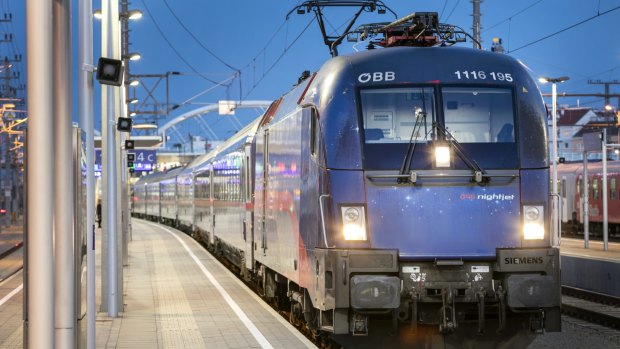
OBB's Nightjets have led a comeback for sleeper trains in Europe.
Snuggling between crisp clean sheets in your ingenious compact compartment as steel wheels slide across steel rails beneath you. For more than a century the European sleeper train has been the most romantic way to cross Europe.
Now it's become the perfect way to transfer to cities 700, 800 or even 1000 kilometres apart without a trek to the airport or the need for an overnight hotel stay.
With an evening departure and morning arrival, an overnight train ride is often more time-effective than a two-hour flight. Once you add a train or bus to the airport, a two-hour check-in, the flight itself and a taxi, bus or train into the destination city, flying can swallow up at least five precious sightseeing hours for the average traveller.
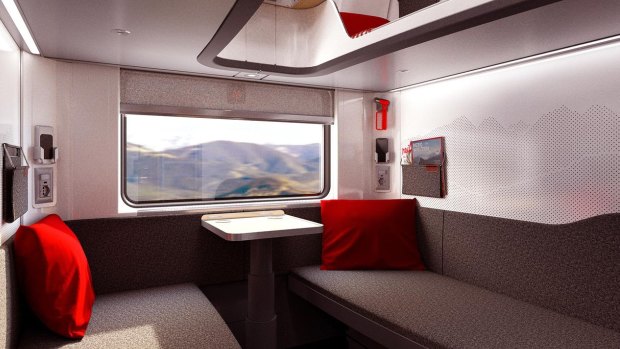
A Nightjet sleeper compartment.
In Europe, rail stations are invariably located right in the city centre, often walking distance from all the sights. And there's generally no check-in for a sleeper train - just stroll into the station, find the train and step aboard, any time before it departs.
A sleeper ride also saves a hotel bill - a key benefit given the price of accommodation in many popular European cities - and, importantly, with climate change an increasing concern, it generates a fraction of the CO2 emissions of a flight.
However, European sleeper trains have not had an easy time in the last two decades. Once commonplace, they've struggled to compete with budget airlines on longer routes whilst being superseded by high-speed trains on many shorter hauls.
In Spain and Portugal, for example, sleeper trains have all but disappeared. The nadir came in 2016, when the largest operator, Deutsche Bahn (German railways), pulled the plug on its City Night Line sleeper network, claiming it was impossible to make sleeper trains work commercially.
A much smaller operator then stepped in and took a huge risk: OBB (Osterreichische Bundesbahnen, Austrian railways) bought DB's sleeping-cars and took over many of its routes, rebranding them and its own sleeper routes Nightjet.
The gamble paid off. OBB is now the largest sleeper operator in Europe and the Nightjet network is in the black. And as climate-conscious travellers increasingly seek a time-effective alternative to flying, OBB has cautiously expanded its sleeper routes, reinstating sleepers from Vienna to Amsterdam, Brussels, Paris and Berlin and from Amsterdam to Zurich.
The demand is there, the Nightjets often leave fully-booked. OBB is now investing in new sleeper trains which feature a shower and toilet in all one and two bed sleepers, traditional four-berth couchettes for families and friends and innovative individual "minisuites" reminiscent of Japanese capsule hotels for those who want a bed and privacy on a budget.
Next northern summer, the first of these new generation sleepers go into service on OBB's most popular Nightjet routes, from Munich, Salzburg and Vienna to Milan, Venice, Florence & Rome. But OBB is not the only operator reinstating sleepers.
France, where a forward-looking French government late last year received approval from the European Commission to ban short-haul domestic flights between cities that are linked by a train journey of less than 2.5 hours, has restored overnight trains from Paris to Nice and Lourdes, two useful routes for travellers. And from May 25, a company called European Sleeper is introducing a new train service that will take passengers from London to Berlin, via Brussels in 16 hours, arriving in the German capital just before 7am.
Elsewhere, Italy's 300 km/h high-speed trains may now be top choice between Venice, Florence and Rome but sleeper trains are ideal for travel between Rome and Sicily with Trenitalia, the main train operator in Italy, planning to order new trains.
In the home of "flygskam", meaning flight shame in English, the Swedish government to provide a time-effective rail link between western Europe in the form of a new Hamburg-Stockholm sleeper service.
A journey on that route last year reminded me why I love sleepers and why I'm glad they're here to stay. The couchettes were comfortable, my travel companion and I chatted over some wine until midnight, we slept well and we woke to the sunlit Swedish countryside before rolling into the Swedish capital, right on time.
Such long-distance trains are a far more enjoyable experience than a flight, produce a fraction of the emissions and take fewer daylight hours than flying. What's not to like? Here, then, is my guide to sleeping your way around Europe by train.
Fall asleep in Paris, France
Wake up in Nice (or Cannes, Antibes), France
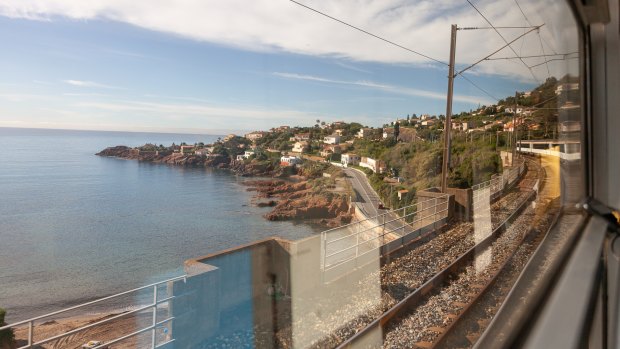
Credit: SNCF
Today's incarnation of Agatha Christie's fabled Train Bleu leaves Paris Austerlitz at 21:20, with first class four-berth couchettes and second class six-berth couchettes. Wake up to rocky headlands, yacht-filled bays and millionaires' villas as the train snakes along the Cote d'Azur, reaching Cannes at 08:38 and Nice at 09:08. France's famous TGV high-speed train takes half the time but the first morning TGV won't get you to the Promenade des Anglais until lunchtime. The sleeper is slower but saves time as well as the steep cost of a Parisian hotel. From €29 ($44.70) in a second class couchette, €69 in a first class couchette. See www.sncf-connect.com
Fall asleep in Paris, France
Wake up in Salzburg, Austria
A full day's sightseeing in Paris, dinner served in your sleeper on proper china with a glass of excellent Austrian wine as you speed east towards the German border, breakfast served next morning as dawn breaks over scenery straight out of The Sound of Music, before rolling into Mozart's birthplace. The Nightjet sleeper leaves Paris Est at 19:58 on Tuesdays, Fridays and Sundays arriving Salzburg 07:26, with four and six-berth couchettes and one, two and three, ed sleepers, some with shower and toilet. Nightjet fares start at €59.90 with couchette or €159.90 in a single sleeper, breakfast included. See www.oebb.at
Fall asleep in Amsterdam, The Netherlands
Wake up in Vienna, Austria
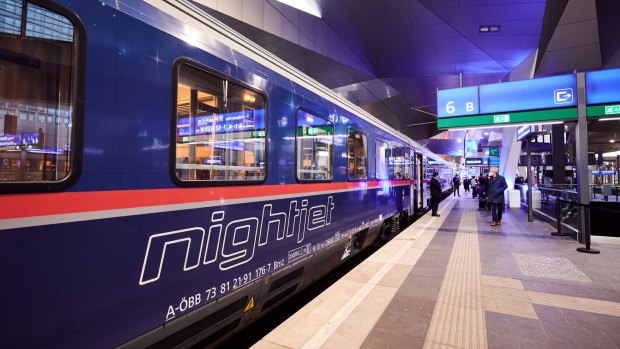
Credit: Nightjet
From Anne Frank's house to Empress Sissi's Schönbrunn Palace while you sleep: every day, a Nightjet sleeper leaves Amsterdam Centraal at 19:30, arriving Vienna at 09:19, with four and six-berth couchettes and one, two and three bed sleepers, some with shower and toilet, breakfast included. Nightjet fares start at €59.90 with couchette or €159.90 in a single sleeper, breakfast included. See www.oebb.at
Fall asleep in Milan, Italy
Wake up in Sicily, Italy
Western Europe's longest sleeper ride, the InterCity Notte to Sicily leaves the imposing architecture of Milan Centrale at 20:10 every night, with sleeping-cars and couchettes for Palermo, Catania and Syracuse, arriving the following afternoon. The train is shunted onto a ferry to cross the Straits of Messina to Sicily, a unique experience and the only remaining train ferry route in Europe. Similar sleepers link Rome and Naples with Palermo, Catania and Syracuse. From €39.90 in a four-berth couchette or €89.90 in a single-bed sleeper. See www.trenitalia.com
Fall asleep in Krakow, Poland
Wake up in Prague, Czech Republic
Two beautiful European cities in one trip: leave Krakow at 22:44, arrive in Prague at 07:38 next morning just 15 minutes' walk from the old town. The train has four and six berth couchettes and one, two and three bed sleepers, some with shower and toilet. From €29 with couchette, €49 in a two-bed sleeper or €75 in a single-bed sleeper. See www.cd.cz
Fall asleep in Hamburg, Germany
Wake up in Stockholm, Sweden
Introduced from September 1 last year, the new SJ EuroNight train leaves Hamburg Altona at 21:55 daily, arriving at Stockholm Central at 09:55 next morning. It has four and six-berth couchettes and one and two bed sleepers. In Stockholm, the amazing Vasa Museum (www.vasamuseet.se) is worth the journey on its own. From €44.90 with couchette in six-berth, €69.90 in four-berth. See www.sj.se
Fall asleep in London, England
Wake up in the West Highlands, Scotland
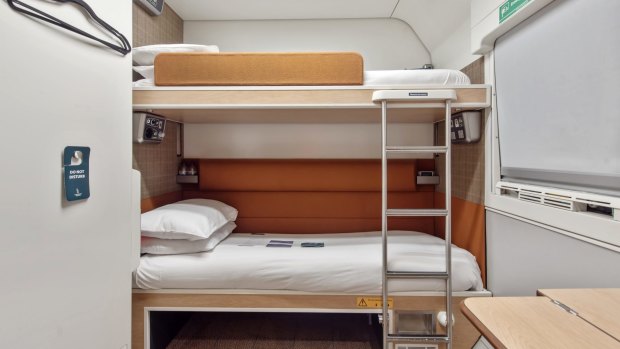
Credit: Visit Britain
A little bit of Scotland that starts in central London, the Caledonian Sleeper leaves Euston station at 21:00 Mondays-Fridays, 21:15 Sundays for Fort William in the beautiful West Highlands, a 10-minute walk from the foot of the hiking trail up Ben Nevis, Britain's highest mountain. Haggis, tatties and neeps in the lounge as you leave the Big Smoke, you wake to gnarled oak trees, bubbling burns and deer bounding away from the train. Caledonian Double rooms even boast a double bed, toilet and shower. From £140 for a single room, £170 for a twin. See www.sleeper.scot
Fall asleep in London, England
Wake up in Cornwall, England
Imagine a friendly Cornish B&B on wheels. Leaving Paddington Station just before midnight daily except Saturdays, the Night Riviera has cosy one and two-bedrooms, a convivial lounge car and great staff. Wake to Truro cathedral and St Michael's Mount before pulling into sunny Penzance, a bus ride from Land's End. From £114.90 for a single room, £104.90 per person for a twin. See www.gwr.com.
Mark Smith is the founder of the acclaimed The Man in Seat 61 website which offers expert guides and advice about rail travel not only in Europe but around the world. See seat61.com
Five more must-knows about sleeper trains
BERTH CONTROL
Berths are sold individually on most European sleeper routes, so one ticket secures one bed. If you book one person in a double or two people in a triple (for example), the remaining bed will be sold to another passenger of the same gender (even the famous Orient Express operated like this, Hercule Poirot would have shared). However, if you book two beds in a double or one bed in a single, you'll get sole occupancy with gender no longer relevant.
TICKETS TO RIDE
As there isn't a single Europe-wide ticketing system for trains, you must generally use the ticketing system for the relevant national rail operator. The German Railways website (www.bahn.de/en) provides a useful online timetable for most European trains and you can book Nightjet sleeper trains at the OBB (Austrian Railways) website (www.oebb.at). It also books sleeper routes run by OBB's partners, The ever-popular Eurail pass (www.eurail.com) offers unlimited train travel across much of Europe, including sleeper trains. You can normally take as much luggage as you can carry, take it into your sleeper or couchette compartment and place it on overhead racks, under the lower berth or on the floor.
BUNKING DOWN
European sleeper trains offer three types of accommodation: sleepers, couchettes and seats. Sleepers offer beds with all necessary bedding in one, two or three-bed compartments with all compartments including a washbasin and on some routes a compact private shower and toilet. A couchette is a basic flat padded bunk with rug, sheet and pillow in six-berth and four-berth compartments. Cheaper than sleepers and ideal for families, toilets and washrooms are at the end of the corridor.
WORKING UP AN APPETITE
In sleepers and sometimes couchettes, you can order snacks and drinks from the attendant. In Nightjet sleeping-cars there's a room service menu of snacks, drinks and hot dishes that can be served in your compartment, on proper china with metal cutlery (no airline plastic here). Or you can bring your own picnic and even your own wine. On most routes the sleeper fare includes breakfast, served in your compartment.
STAYING SAFE AND SECURE
In a sleeper or couchette you'll be safe and snug. Sleeper and couchette compartments have a standard lock plus a security deadbolt which cannot be opened from outside. Sleeping cars have an attendant on duty looking after the car, the most modern sleepers now have card-key locks and CCTV in the corridor. An attendant supervises each sleeping-car from a galley at one end. In most cases he or she can convert your compartment into a private sitting room for evening or morning use.
Telegraph, London
Sign up for the Traveller Deals newsletter
Get exclusive travel deals delivered straight to your inbox. Sign up now.